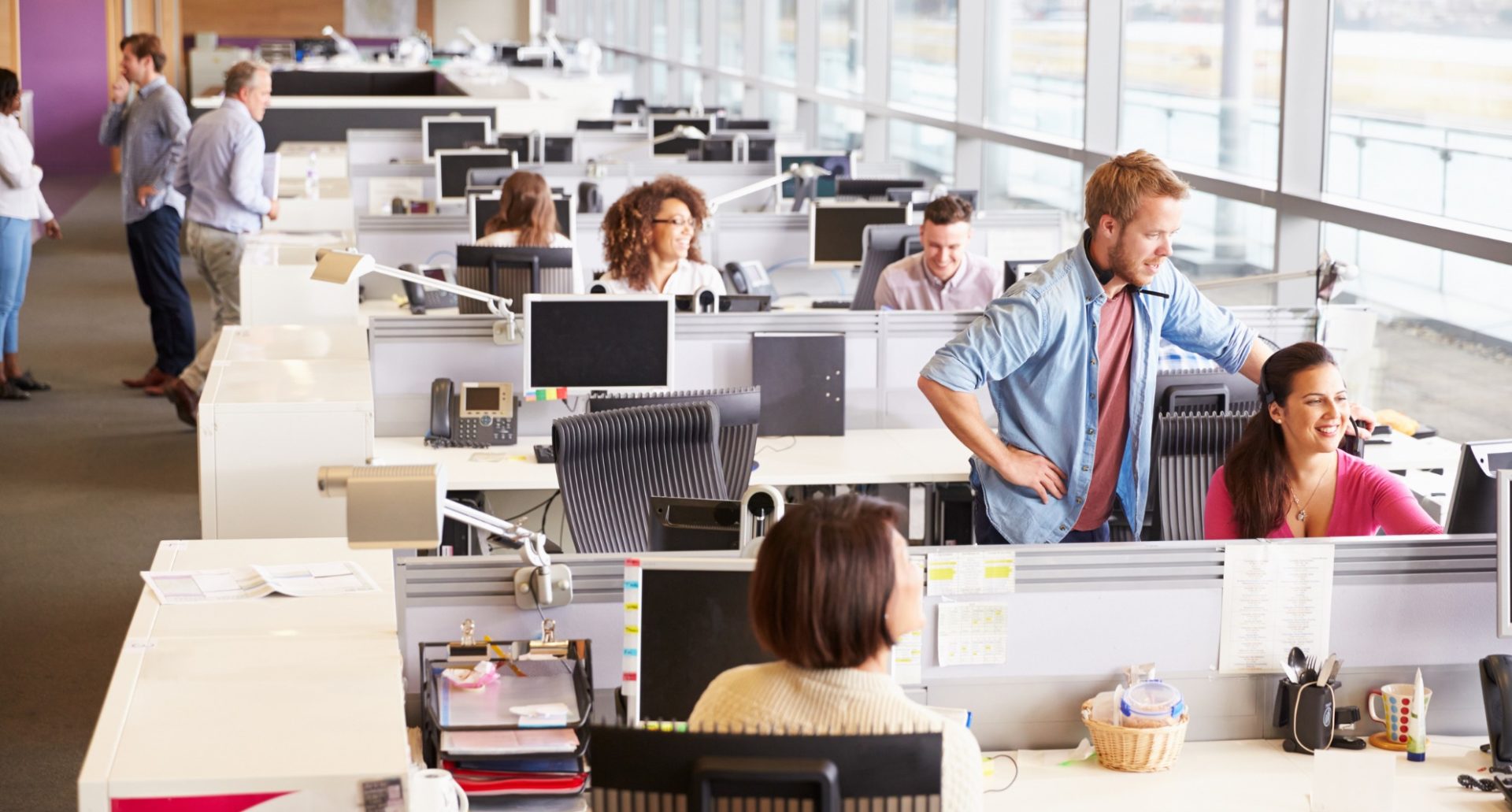The open space office or large open office, became popular in the 1970s in America, when they arranged employees in a single line in an open, large office. Later they were divided by cubicles. In some, mostly multinational companies, this type of office has also been adopted in Slovakia.
In fact, according to the International Facility Management Association, about 70% of offices have some form of open space. This office design originated under the pen of architect Frank Lloyd Wright in 1904 in New York. The centerpiece of the brick building became a large atrium with endless rows of prepared desks for employees. This office concept saw its greatest success at the turn of the 2nd millennium, thanks to tech giants such as Google, Apple, and Facebook, which particularly favored an open-plan philosophy.

But what are the advantages and disadvantages of a large open office?
Advantages
- Collaboration with colleagues
You can easily ask for advice without having to interfere with closed doors. Instead of sending an email, you can go straight to your colleagues and communicate together, get advice and resolve the work issue. Such spaces allow for better communication, which can lead to innovation and improved company operations. Teamwork is also improved. - Getting to know each other
Open office plans also increase personal interaction. Unexpected camaraderie develops when jokes are spread across the room and impromptu lunches are organized. - Sparking creativity
Getting everyone together in an open space can also help to spark a creative atmosphere. It’s easier to brainstorm ideas and naturally engage others through simple: “Hey, what does everyone think about this?”
Cons
- Pass the hand sanitizer
If you feel like you’re constantly sick from work, it’s because you probably are. A Danish study found that open-office workers had significantly more days away from work due to illness. Another study found that a lack of private offices causes high blood pressure, stress, and employee turnover.
- Keep your thoughts
In a moment of full concentration, suddenly someone stops by your side. “Hey, do you have a moment to talk?” says a colleague. We’ve all been there. It never lasts but a second, and then it’s hard to get back to the original thought.
- There is no “time alone”
Whether it’s just a personal phone call, sometimes we just need a minute to ourselves. We need a chance to be human – we can’t always maintain a perfect facade of productivity. For these moments, we need privacy.
So like most things in life, working in an open office has its positives and negatives. And that’s to be expected. It’s hard to design a space that suits everyone. Also, you can’t just get rid of the walls, sit everyone at a long table, and hope people will cooperate. It’s important to nurture employees’ creativity and respect their privacy. Last but not least – every member of an open work environment should contribute to making everyone feel comfortable.